Fiction
Nonfiction
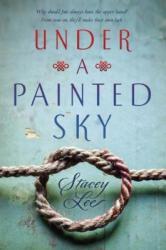
Under a Painted Sky was just okay for me. The book was probably very similar to being on the Oregon Trail - every once in a while something exciting would happen but for the most part, you're on the trail with a long stretch of boring ahead of you! That being said, I really do like the fact that Stacey Lee used a "historical" setting to present two strong, multicultural female characters. Annamae (African-American) and Samantha(Chinese) came into each others lives at a critical time and in the end, they realize that you can choose your family. Also being accepted for who you are was a central theme. But I felt Under a Painted Sky was a historical novel with not much history. The story takes place on the Oregon Trail, and we do hear of some of the hardships of traveling that the pioneers faced, but Stacey Lee only did one mention of Native Americans in the book. One sentence about the Cheyenne. It's hard to believe that on the trail, they didn't encounter any Native Americans. I think this book will be popular with teen girls. They will love the romance!
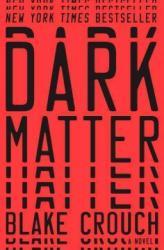
It seems to me that the multiverse is a popular topic in fiction today. Sure, there have been plenty of stories about parallel universes and the fractal branching of our decisions, but for some reason, there’s been an uptick in the number of these stories lately. Perhaps these stories are trying to find a better universe in which to live, or perhaps they’re trying to show us that the world we have could be much worse. Either way, Blake Crouch’s Dark Matter nails the multiverse plot by exploring all the different connotations of the ability to travel between parallel universes.
Presented in a traditional, three-act narrative, Dark Matter thrusts its protagonist into another version of his reality, ripping him away from his idyllic life. Using quantum physics as a form of magical hand-waving, the narrative then turns to the main character’s relentless search for his original universe. While the result of this exploration fits nicely into the book’s natural third act, I almost would have liked to see something a little different and less predictable. Still, all three acts are entertaining as a breathless thriller driven by the emotions and resolve of the main character.
The best part about Dark Matter is how it fleshes out all the consequences of being able to travel between parallel dimensions. It’s not nearly as simple as an It’s a Wonderful Life (1946) “you-never-existed” storyline. That being said, I do question why the “original” main character had the perfect life, especially if many of the other parallel universes seemed to have relatively close representations of the life he was trying to return to.
But, in the end, the narrative is driven by the characters, and these characters are well-developed and exciting to follow.
A multi-dimensional thrill ride, I give Dark Matter 4.5 stars out of 5.
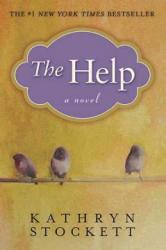
The Help, by Kathryn Stockett, is a novel that takes place in the early 1960's in Jackson, Mississippi where racism is strong. The story goes between the perspectives of three different women who are all going through differing struggles. Aibileen is a black maid working for a white family, one of many families she has worked for. She is trying to cope with the her 24-year-old son’s death. Minny is also a black maid and a good friend of Aibileen.
Minny is searching for yet another job because she can not keep her mouth shut and says whatever she wishes to her white boss. She also fails to protect herself from her husband, Leroy, who beats her often as a result of his drinking. Eugenia “Skeeter” (as everyone calls her) has just returned from college at the University of Mississippi. She longs to write for a newspaper company in New York City, but she is stuck on her parent’s cotton farm where her mother is constantly bugging her about finding a man. Skeeter applies for a job at Harper & Row but is declined the job. However, Elaine Stein, an editor from Harper & Row, offers some advice to Skeeter. Skeeter is left to find a job in Jackson. She finds a job for the local newspaper, writing for the housekeeping column. Skeeter has never had to housekeep in her whole life, though. Consequently, Skeeter goes to the aid of Aibileen, who is the maid of her close friend Elizabeth. Aibileen cautiously answers Skeeter’s questions hoping that her boss, Elizabeth, will not become angry with her. Meanwhile, Skeeter ponders day and night about a topic she could write about. Finally, Skeeter comes up with an idea. She requests Aibileen’s assistance in writing about the black maids, known as the help.
After much consideration and reluctance, Aibileen agrees. Aibileen, Skeeter, and Minny come together as a team to form the book that can change their lives forever. Together they create this book despite the many risks because of racism that they face.
I loved The Help and recommend to anyone who is searching for a funny and touching novel. The book also provides some information and background on the racism during the 1960's as the Civil Rights Movement unraveled. The book will keep you interested and wanting more. I felt I was constantly picking up the book and reading and was always rooting for the three main characters. I enjoyed receiving the story from the perspectives of Aibileen, Skeeter, and Minny. I felt that the whole story was intriguing. I found nothing dull and have no negative comments or complaints. The Help is a good quality story that will keep you delighted and engrossed.
Reviewer Grade: 9
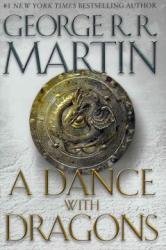
Not only has the release of George R.R. Martin's "Song of Ice and Fire" book trilogy garnered international acclaim, but it has also brought together a diverse community of fans, all of whom share an appreciation for the masterpiece they see in Martin's work. From novel to novel, Martin has continued to enthrall his fans with plots upon counter-plots, timeless lore, and brutally realistic characterization. Suffice it to say, fans were displeased when the six-year waiting period struck between the third and fourth installment. Now, with "A Dance with Dragons" well past its release, fans beg the question, "How does the fourth novel stack up to its prequel 'A Feast for Crows' and the other books?" To answer that question, I would say A Dance with Dragons has trumped the three previous novels, and exceeds the quality of Martin's previous work.
In A Feast for Crows, the plot left out the happenings of Tyrion, Jon, and Daenerys. Luckily, however, this new novel pays most of its 1000+ pages to these plotlines. With the war over, attempts for peace in King's Landing are made, but as Tyrion reaps havoc in the capitol, he flees across the Narrow Sea to meet with the rumored "Daenerys Targaryen".
She has done quite well for herself, having managed to take power, wealth, and respect form the former masters of Slaver's Bay. Though as old conflicts are settled, new ones arise, and Daenerys soon finds that governing over a foreign city is a challenge.
Up in the North, the 998th lord commander of the Night's Watch, Jon Snow, faces distrust among his brothers. Yet in spite of their squabbling, a bigger threat looms across the Wall, with the Others inching closer to the Seven Kingdoms.
In addition to these major plotlines, there are of course reappearances from a range of other characters. Their plots are befit to twists, turns, and outright bewilderment, able to surprise even some of the most observant readers.
I read this book immediately after finishing the last, and can say that I am pleasantly surprised with it. The plotlines continue to complicate, and intrigue readers ever-further in this timeless trilogy.
One complaint I would file with this novel is that due to Martin's fragmented writing style, for which certain books focus primarily on particular plotlines, I felt that some information was hard to remember or keep track of. I would definitely recommend brushing up on a summary of "A Storm of Swords" beforehand, as a way to refresh yourself on those details.
If you decide to not continue with the trilogy, my recommendation has to go to J.R.R Tolkien's "Lord of the Rings" trilogy. While it's true that the novels are highly similar, Tolkien's work makes up for some of the imperfections in Martin's.
Overall, from my opinion, A Dance with Dragons is certainly an improvement on the last installment in the trilogy, and stands to be one of the better "Song of Ice and Fire" novels. If you are this far into the series already, I would have to say that it's worth continuing. The timeless and rich storytelling found in Martin's novels makes for a read that simply cannot be passed up!
Reviewer Grade: 10
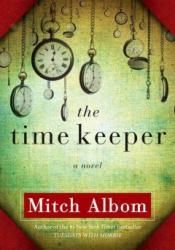
Mitch Albom is one of the most creative authors I've ever read. The Time Keeper is an amazing read, as it makes us question how we view time. Time is one of the driving forces of our everyday lives, yet we treat it as a simple, inanimate object. The Time Keeper focuses on two characters: A teenager who wants time to go faster and an old man who wants it to go slower. But there is also a third character: The Time Keeper. An old man in a cave, locked away from humanity, subject to hear all the voices of Earth pleading for time to go faster, slower, or to stop altogether. This book is very interesting, and I absolutely recommend it.
Reviewer Grade: 11
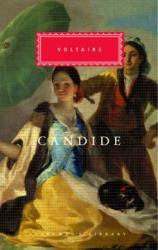
Candide is one of my favorites. Though it does deal with real problems, it is an exceedingly fun read. This is thanks to the sardonic, sharp wit of Voltaire. Satire is executed beautifully in this book. If you pick up this book, chances are you will laugh out loud. I very strongly recommend Candide.
However, if you do read it, please be patient with it. Because Candide was written in 1758, some hilarious and important details can go right over the reader's head. But if you put in some time to understand what Voltaire is really trying to say, it will be worthwhile.
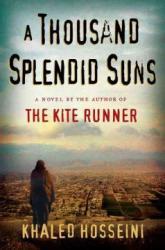
Everyone should read A Thousand Splendid Suns at one point or another. This book is about Afghanistan over the past 50 years. It follows 2 women in Afghanistan and reveals the horrors of their lives. Though fiction, A Thousand Splendid Suns is by no means exaggerated or unrealistic. Some parts of this book are heart-wrenching, gruesome, and may make you cry, but other parts will undoubtedly warm your heart and put a smile on your face. This book is extraordinarily well-written and meaningful, and I strongly recommend it.
Reviewer Grade: 11

Fans of Vardalos get a behind the scenes look at her (generally not-so) glamorous Hollywood life -- and a personal tale about her struggles with infertility and foster-adoption that transformed her in to the "Instant Mom" of the title. While most parents on this journey don't have to negotiate with the entertainment press, Nia's story is funny, sweet, and deeply relatable. She is currently an Adoption Ambassador for the Adoption Council of Canada (and the book does include some information for those starting their family adoption journey) but the story stays close to home, close to the heart, and is a charming personal tale of her family's origins.
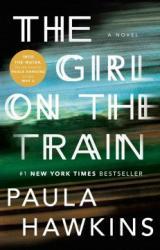
I haven't always been a big fan of mystery, but this book changed that. The Girl on the Train is about a woman with some difficult events in her past who becomes a crucial part in solving a missing person case. This book resembles a psychological thriller, which keeps the level of suspense high. It shows multiple people's perspectives, which makes following the mystery so much more intriguing. I absolutely recommend this book, whether you like mystery or not. Chances are you won't be able to put it down.
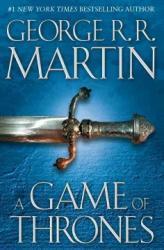
This book blew my mind. A Game of Thrones is the first book in the series A Song of Ice and Fire. These books are fantasy, and they follow the wars, events, kingdoms, and lives of the people of Westeros. This book is extremely dense, but that only means that it is full to the brink of background information and interesting tidbits about the world. The most amazing thing about this book is how developed the world is. Martin must have put an unimaginable amount of time into world-building, and this effort certainly shows. The plot is so complex, and almost all of the characters are wonderfully 3-dimensional.
Reviewer Grade: 11

Originally written for his children, J.R.R. Tolkien's fantasy novel “The Hobbit” is hailed among book critics as a remarkable, introductory-level fantasy novel. It manages to engage readers with an epic and timeless plot, while also avoiding the use of profane language and violent scenes.
The tale is set in Middle Earth, home to a number of human-like species including the Hobbits, Dwarves, and Elves. Over the course of the novel, Tolkien provides a rich background of the history of these three species.
Namely, the majority of backstory is setup around the dwarves- who originally inhabited the “Lonely Mountain” and made their fortune off of mining gold. Their empire prospered until at last, a greedy, gold-seeking dragon named “Smog” wreaked havoc to their way of life.
Enter Bilbo Baggings, a middle-aged Hobbit settling down in the Shire. After he hosts a seemingly ordinary dinner party, his life is turned inside out, and the inner spirit of adventure is awakened with him. He joins in a quest to reclaim the dwarf home, and takes part in a number of adventures along the way.
I originally read this book after finishing the “Lord of the Rings” trilogy. While it’s true that this novel is aimed at a younger demographic, it is certainly still an engaging read for older teens and adults. J.R.R. Tolkien embeds a number of rich storytelling devices into his writing, and it makes the read an absolute pleasure!
If you decide not to try this novel, I would suggest reading “A Game of Thrones” by George R.R. Martin. It is certainly not as child-friendly, and has some pretty gruesome scenes, but Martin’s writing makes up for many of the imperfections of Tolkien’s work. Overall, The Hobbit is most aptly suited for readers aged 8-12, and serves as a great introductory novel to fantasy literature. For older readers, I might suggest a different read, but all the same, and in spite of your age demographic, The Hobbit is truly a timeless masterpiece of literature and is worth giving a try!
Reviewer Grade: 10

"A Feast for Crows", the fourth installment in George R.R. Martin's "A Song of Ice and Fire" book trilogy, takes up the challenge of transitioning the narrative from "A Storm of Swords". Readers were left off at the end of the War of the Five Kings, which had drawn havoc to all of Westeros. Throughout the course of this new story, attempts are made to unify the country, but as some relationships are mended- others are torn, and the tale of Westeros continues to grow ever more colorful with Martin's next installment.
The narrative focuses mainly on the happenings of central Westeros, with exclusions to Jon Snow and Daenerys Targaryen's plotlines (which are saved for the next novel.) Cersei Lannister's youngest son, Tommen Baratheon, now sits atop the Iron Throne, and takes guidance from his family members. Cersei and her children mourn the death of Joffrey and Tywin, whose demise is believed to be at the hands of the family Dwarf, Tyrion. However, even as Cersei attempts to make rational decisions, it becomes clear that her mind is clouded with vengeance.
In light of the fact that Martin killed off a number of main characters in his last novel, he pulls his readers into new storylines such as those with Brienne of Tarth as well as characters in Dorne and the Iron Islands. Arya Stark explores a new story arc in Bravos and all across the realm, religion emerges to have an even bigger impact on the plot. Overall, Martin does a fantastic job of bringing up new plot points and transitioning the trilogy into its next narrative.
I began reading this book immediately after the last, and while it’s true that it isn’t nearly as eventful as A Storm of Swords, the plot is equally as engaging. Players in the game of thrones continue to make political powerplays and hidden sabotages, all the while grounding their feet to climb the ladder of power.
One complaint I have with this novel is that its slow pace contrasts poorly with that of the last installment. Readers were left with suspense and eager anticipation for A Feast for Crows, and while they weren’t entirely disappointed, I felt that the beginnings of this book missed a few major fan expectations. This, in part, is due to the fact that there is a 5-year jump from A Storm of Swords to A Feast for Crows. Of course, some details are clearly left out over such a large gap.
If you decide not to continue with this series, I would recommend trying J.R.R. Tolkien’s “Lord of the Rings” trilogy, as it makes up for some of the imperfections with Martin’s work. With all that having been said though, I would certainly recommend continuing on to read this book. Its slow pace may at first deter you from reading, but, from my experience, if you stick through and finish the book, you will be glad to have done so. There are so many rich story-telling devices Martin imbeds into his writing, and paired with the fantastic plot of A Song of Ice and Fire, this book makes for a tremendous read!
Grade 10
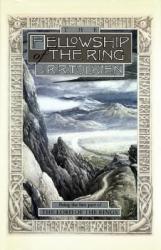
Over 60 years ago in 1954, J.R.R. Tolkien unveiled the first installment of his series “Lord of the Rings” with the publication of “The Fellowship of the Ring”. Unknown to him at the time, his series would stand to leave a legacy- one that would bring together communities’ decades after his death and revolutionize the fantasy genre forever. However, in light of the fact that the novel was published literal generations ago, I would like to try my best to analyze whether or not it stacks up today with modern-day fantasy novels.
The story takes place in “Middle-Earth”, an ancient land in which several human-like species- including the dwarves, elves, and hobbits- coincide. The story features a character introduced in a previous Middle-earth novel from Tolkien, Bilbo Baggins, who plays the same role, after 60 years following his last appearance. In celebration of the 111th birthday of Bilbo, a relative of the family, Frodo Baggins, is given an all-powerful ring- said to have been forged by Sauron the Dark Lord and infused with magical powers.
As Frodo soon finds out from Gandalf the Grey, another wizard, the ring enables Sauron to enslave and dominate all of humanity, which for obvious reasons, poses a threat to Bilbo and his entire species. Determined, he sets off on an adventure to destroy the ring, accompanied by some of his Hobbit-friends. The trip intensifies as time goes on, and as Bilbo explores the vast lands of Middle-earth, he meets a number of new traveling companions. Together, they conquest further and meet new challenges to approach.
I read the first book of this series quite some time ago, and even as a 7th grader, was able to read and comprehend most parts of the book. Though with that being said, I would not recommend this novel for someone who is similarly aged. It’s always worth remembering that the book is 60 years old, so the language is bound to be slightly more difficult to read.
There’s also the fact that Tolkien presents readers with an enormous amount of lore, and it can be a challenge to understand all the details.
When reading through this book, I found myself completely immersed in the story. Tolkien does a marvelous job with engaging readers in his story. The world he has created is described in such animated detail, that nearly anyone can get hooked on his story.
If you decide to skip this book, but are still interested in reading a similar fantasy novel, I would give George R.R. Martin’s “A Song of Ice and Fire” book trilogy a try. While it’s true that the novels in this series bear many similarities to “Lord of the Rings”, Martin’s books usually move at faster paces, with a greater number of surprises and unexpected endings.
In spite of the fact that the book may at times be difficult to get through, Tolkien illuminates his stories with rich language, backstory, and imagery; and for these reasons and more, the novel is certainly worth a try.
Grade 10
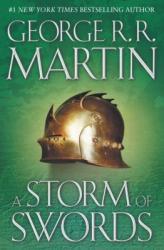
"A Storm of Swords" by George R.R. Martin, which sequels his previous novel "A Clash of Kings", takes root precisely where the last left off. Once again, Martin is challenged with sustaining book-readers attention, in an ever-complexifying story involving a plethora of different characters, motivations, and story arcs. However, after having read the novel, I can testify to the fact that Martin has done an excellent job with continuing the story.
After the "War of the Five Kings" is drawn into motion, young King Joffrey is tasked with defending an incoming attack from Stannis Baratheon. In spite of the fact that Joffrey is vastly incompetent to Stannis, who not only has a larger army but is also a distinguished battle commander, the crown stands a chance with the help of Tyrion Lannister.
Up North, Jon Snow is captured by the Wildlings- a vicious group of Northern barbarians. Meanwhile, Mance Rayder unites hundreds of Northern tribes under the prospect of defeating their common enemy; and gathers them in an attack against the wall. When Jon Snow returns, he warns the watch of their plans, but far-outnumbered, it would seem that defeat is inevitable. The attack draws nearer, and as it does, an unexpected card comes into fold- leveling the odds of the battle.
Across the Narrow Sea, Daenerys Targaryen seeks an army with which she can use to recapture her homeland. Coincidently, Ser Jorah Mormont- an outlawed Westerosi knight- is at her command, and with her, as well as the help of Barristan Semly, former King's Guard's to Daenerys' father, she manages to gather an army of Unsullied. Through a number of risky maneuvers, Daenerys also wins the affection of the common people and takes control of former slave cities.
George R.R. Martin continues developing these plotlines and more, by drawing satisfying conclusions to old story arcs and bringing new beginnings to others. All the while, he manages to keep readers at the edge of their seat, enjoying every moment of the book.
My main complaint with this novel is that while the plotlines are rich and engaging, the sheer magnitude of its length makes it a very long read. I sometimes question whether the series is worth continuing to read, as it takes an enormous amount of time to finish. However, for someone in this position, I might recommend watching the TV series- for which there is currently around 60 hours of content. It is definitely a solid alternative to the book series for someone in more of a time crunch.
If in fact you do decide to switch book series, I would recommend J.R.R Tolkien's "Lord of the Rings" book trilogy. It's similar to A Song of Ice and Fire in some ways, but makes up for certain imperfections found in Martin's work.
Overall, if you have read this far into the series, by my judgment, the trilogy is worth continuing. From "A Clash of Kings" onto this next novel, the plot lines are drawn even further and the story intensified in all the right ways.
Grade 10
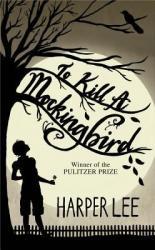
Although it was a little hard for me to get into this book, once I did I was hooked. This book is about Scout, a 7 year old girl who is dealing with the hardship of her father having to defend a black man of rape in the 1940's. Along the way, Scout and her brother Jem meet Dill and they spend their summers together. Dill wants to get Boo Radley to come out of his house, and in the end, he does. With this book is the message to put yourself into others shoes to see how they feel. A classic book, great for anyone.
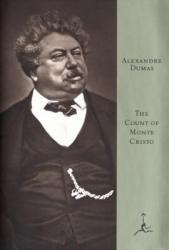
"The Count of Monte Cristo" by Alexandre Dumas is a fantastic whirl-wind of unforgettable characters and interweaving story-lines that left me awestruck and yearning for an even deeper glimpse into this world of treachery, romance, adventure, and mystery. This book is as deceivingly witty as it is over-flowing charisma and has nestled its way to a special place in my heart as one of my favorite novels of all time.
The novel starts out with a scenic over-look of an Italian waterway in Marseilles as it carries along a lofty ship named Pharaon with one passenger in particular who is unlike any other named Edmond Dantès. A dashing young and honest man dawning with potential who has just returned with news that will change the course of his life, and the lives of many others, forever. He is falsely accused of traitorous activity and is sentenced to life on a prison located on an island off the coasts of Marseilles forcing him to leave behind his family, his friends, and the love of his life Mercédès. This marvelous tale unfolds within the walls of this prison and among its outer-walls as Dantès attempts to make a dashing escape with a kind mannered preacher. But, this is only the beginning of his tale. As the life of Dantès unfolds, so does the life of the many others who have been lucky enough to fall into his life.
This novel is truly unforgettable as it follows not only the life of Edmond Dantès, but also the lives of his lover, best friend, family, and even his partners from his shipping company. Filled to the brim with treacherous plots, revenge, heartache, mystery, and pirating; it also contains young love, faith that knows no bounds, and families filled with the knowledge that blood truly is thicker than water.
I would recommend this book to anyone looking to fall in love with not only a menagerie of unforgettable characters, but to a reader who is looking to fall head-first into a world that they will find themselves cherishing forever.
Many blessings and happy reading : ),
Reviewer Grade Level 11.
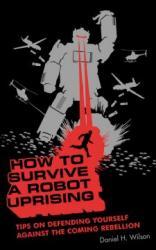
As a precursor to Robopocalypse , How to Survive a Robot Uprising: Tips on Defending Yourself Against the Coming Rebellion takes a humorous approach to educating the reader about the capabilities and limitations of today’s robots. Similar in style to Where's My Jetpack?: A Guide to the Amazing Science Fiction Future That Never Arrived , How to Survive a Robot Uprising uses the humor of preparing for the end of the world to poke fun at the limited possibility that we’d eventually be destroyed by the robots we use to make our lives comfortable today.
With my background in robotics (my Master’s Degree was in Mechanical Engineering with a focus on Robotics and Design), I quickly realized how Daniel H. Wilson was writing this “guide.” Robots are powerful and useful machines, many of which can perform actions much more efficiently and accurately than humans can, thus leading to our swift and inexorable demise.
However, by the same token, they also have limitations and challenges that we humans do not (or at least don’t consciously think about). These robotic challenges are primarily used “against” them in this hypothetical scenario, revealing that most robots aren’t as indestructible as we make them out to be in fiction.
My only qualms with this book were that it was too short (I love this tongue-in-cheek writing style) and that the structure seemed kind of “loose.” Sure, different sections went over such topics as types of robots, and what ways these robots could be incapacitated, but the flow felt a bit like “stream of consciousness” writing. Granted, many of the topics cross over into each other, so it can be difficult to box them into discrete and distinct sections. Still, the narrative seems to jump all over the place as a result. Perhaps this is why Wilson decided to eventually write Robopocalypse, to add the structure that was missing from this “pamphlet.”
A funny book that subtly educates the reader about robot strengths and weaknesses, I give How to Survive a Robot Uprising 4.0 stars out of 5.
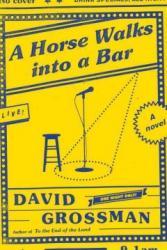
Somewhere along the line, I saw that this book won the Man Booker International Prize this year and put it on my “to read” list on Overdrive. I wasn’t quite sure what to expect, other than perhaps a little bit of comedy, considering the title is a basic setup for a joke’s punchline. In that sense, the book delivered on that premise by being about a stand-up comedian in a nightclub giving his routine to the audience. I did not expect, however, the deeper subtext about the character and his relation to the narrator. It’s in this subtext where we find the meat of this story.
It has often been said that “Sometimes all you can do is laugh to keep yourself from crying.” A Horse Walks into a Bar epitomizes this statement by blending serious subjects like cancer, death, and the Holocaust with a smattering of jokes, physical comedy, and anecdotal monologues. It’s in this contrast where we find how uncomfortable society is when dealing with the difficult subjects of life. I know I usually use comedy to cope with challenging situations, often in an inappropriate accommodation to the dour mood. In the end, we’d rather not address these facts of life because they don’t bring any joy into the world.
Partly due to a lack of explanation, as well as a somewhat jolting and meandering storytelling method, the plot of this book felt a little light, if not downright confusing. I’m sure if I had paid more attention to the words spoken by the ill comedian (who himself was kind of weird) I would have pulled more out of it and understood it better. Unfortunately, my mind always clings to the jokes, of which there a few good ones, and tends to ignore anything else that might be significant.
A bit uncomfortable, but poignant nonetheless, I give A Horse Walks into a Bar 3.5 stars out of 5.
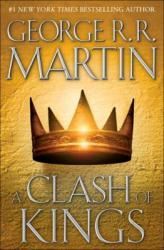
"A Clash of Kings", the second installment in George R.R. Martins "A Song of Ice and Fire" book trilogy, picks up where the first novel, "A Game of Thrones" left off. With the death of the King, Robert Baratheon, and his hand, Eddard "Ned" Stark, war rages throughout the realm, with a total of 5 lords declaring themselves for the throne. Robert's brothers, along with their allied houses, raise their banners in outlaw to the crown, while young King Joffrey defends his claim to the Iron Throne.
Meanwhile, Eddard's eldest son, Rob, rallies the North to secede from the Seven Kingdoms in declaration of their own "King in the North". This, of course, reaps certain consequences in a system built on partitions of trust and loyalty. In the midst of this turmoil, yet another lord, Balon Grejoy, who holds the Iron Islands, joins the fight, and in a distant fog from across the Narrow Sea, lies Daenerys Targaryen. She formulates an Army of Unsullied warriors and manages to acquire 3 dragons, restoring honor to her house and strengthening her claim to the throne.
With time, the war unfolds, and as it does, so do an onslaught of secrets, lies, and betrayals unforseen to even some of the most observant readers.
Martin continues to draw inspiration from English history, while also divulging from reality with the continuation of the white walker plot line.
I moved onto this book from "A Game of Thrones", and can genuinely say that I think it was a major improvement from its predecessor. Although the plot may still move a bit slow for some, now that George R.R. Martin has set the stage with background information, there is much more action than in the previous installment of the series.
One personal complaint of mine is that the sheer magnitude of characters, lore, and history presented in the book can get a bit confusing at time.
Especially for someone who is trying one of their first fantasy novels, this book may not be the best fit. On the contrary, however, if you're looking for a longer, and more austere, read, I would certainly continue onto this book from the last. The plot only gets better with time, and I think you'll be pleasantly surprised. If you decide not to keep reading A Song and Ice and Fire, though, I would recommend trying any one of J.R.R Tolkien's fantasy books. From my opinion, they are similar in style, but different enough to cater to one another's faults.
Grade 10
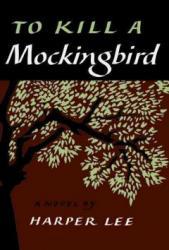
The novel “To Kill a Mockingbird,” by Harper Lee may strike your perception as a seemingly uninteresting story. The book tells the tale of two young children in a sleepy Alabama town, and at face-value, the plot does not garner much intrigue. However, I was in the same situation when I was required to read this book in the spring of my freshman year at high school.
Indeed, while at first the story seemed boring, as I continued to carry on with reading, every turn of the page immersed me ever further into Lee’s timeless story.
As a reader, you share the emotions felt by Jem and Scout, two young siblings, as they learn the nuances of life in the prejudiced American South during the early 1900s. Not only was their community weakened by the economic collapse of the Great Depression, but also sickened by the bitter contempt felt among whites and blacks.
In the beginning of the novel, Jean Louise “Scout” Finch and her brother Jem innocently play games with their friend “Dill” and enjoy life in Maycomb with their father, Atticus. During this time, they have little to no apprehension of the racial tension hanging in their society, but when their father, Atticus Finch, who works as lawyer, openly chooses to defend an African American in court, trouble arises.
Jem and Scout undergo a number of personal developments during the course of the novel. While at first, they carry with them a genuine and child-like innocence, the court trial their father has taken on exposes them to the racist indignity felt by their fellow community members. Jem and Scout struggle to balance their conflict between the social norms of Maycomb and the morals their father has instilled in them. With the trial’s end, Jem and Scout are lead to discover the imperfections of their society, and the ways with which they are forced to deal with them. As the reader follows along, they not only watch Jem and Scout change, but they too themselves are shaped through Lee’s captivating story.
Overall, I enjoyed most aspects of the book. Although some scenes I felt were a bit plain and unprogressive, these minor flaws were overshadowed by the powerful themes Lee expresses through the story. If you haven’t already read To Kill a Mockingbird, I would certainly give the novel a try. If not for the genuine enjoyment of reading the story, try this novel to feel the powerful emotions stirred from Lee’s literary masterpiece.
Reviewer Grade: 10


